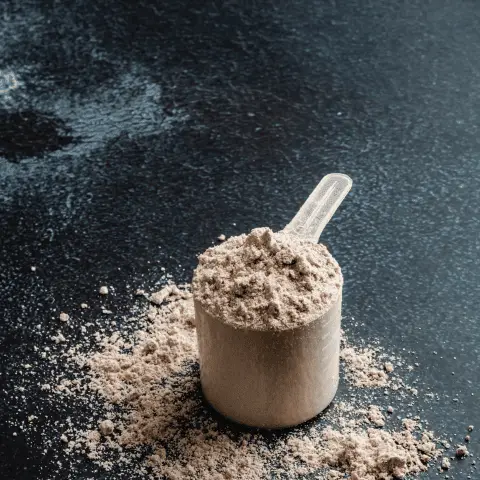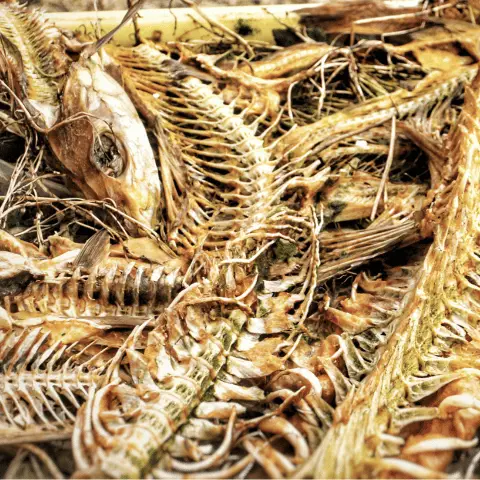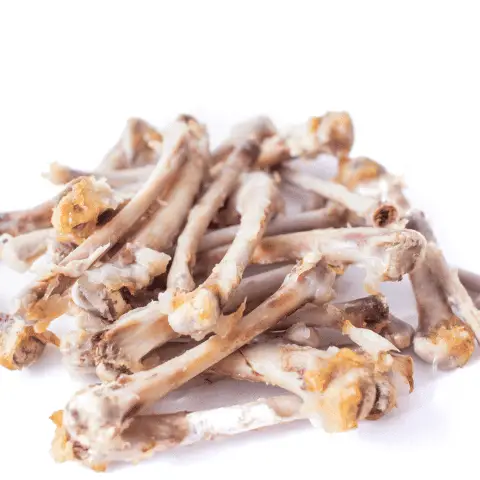If you’re a green thumb, it’s always a challenge to keep your plants healthy and strong. However, you don’t need to spend a lot of money on commercial fertilizers to get the job done. Instead, you can opt for bone meal, a natural and effective fertilizer that has been used for centuries. Bone meal is packed with nutrients that plants love. In this article, we’ll take a closer look at what bone meal is, its benefits, and how to use it in your garden.
What is Bone Meal?
Bone meal is a natural fertilizer produced by grinding animal bones into a fine powder. The bones can be from any animal, including cows, pigs, or fish. The powder can then be used to fertilize your garden, providing your plants with a rich source of phosphorus and calcium. It is often used as a soil amendment to improve the overall structure and quality of the soil. Unlike synthetic fertilizers, bone meal is completely natural and organic, making it a favorite of organic gardeners.

Bone Meal Benefits: Understanding Its Nutrient Content
Using bone meal for your plants has numerous benefits. For one, it’s a slow-release fertilizer, meaning the nutrients are released gradually over time. This means it can provide nutrients to your plants for several months after application. This ensures that plants get a steady supply of essential nutrients, promoting healthy and strong growth.
One of the main advantages of using bone meal as fertilizer is its high phosphorus content. Phosphorus is essential for plant growth and development, promoting healthy root systems, flower and fruit production, and overall plant strength and vitality. Additionally, bone meal contains calcium, which helps to strengthen cell walls, promote root growth, and prevent diseases like blossom end rot in vegetables. Other nutrients found in bone meal include nitrogen, magnesium, and potassium, all of which are important for plant growth and development.
Using bone meal can also help to promote healthy soil, as it contains bone and connective tissue, which can help to improve soil structure and water retention.
Finally, bone meal is completely natural, easy to find, affordable, and widely available, making it a convenient option for gardeners of all skill levels.

Different Types of Bone Meal for Different Plant Needs:
There are several types of bone meal available, each with a different nutrient content and application.
Steamed bone meal is the most common type, and it’s rich in phosphorus and calcium. This type of bone meal is great for promoting healthy root systems and enhancing flower and fruit production.
Blood and bone meal, which is made from both dried blood and bone, contains high levels of nitrogen, making it great for promoting vegetative growth in plants.
Lastly, fish bone meal is made from the bones of fish and provides a balanced mix of nutrients, making it a great all-purpose fertilizer for both indoor and outdoor plants.

How to Apply Bone Meal
Bone meal is incredibly versatile and can be used in various ways. It’s important to follow the application instructions carefully. Bone meal can be applied to the soil before planting or mixed into potting soil. For established plants, you can sprinkle bone meal on the soil around them, and work it into the top few inches of soil. This ensures that the fertilizer reaches the root system, where it can be absorbed by the plant.
You can also mix bone meal with water to create a nutrient-rich liquid fertilizer to feed your plants.
Remember to avoid applying too much bone meal, as this can lead to nutrient burn and damage to your plants. As an alternative to commercial fertilizers, you can also make your bone meal by grinding up dried bones in a food processor or blender (We will see further on how to make your bone meal).
Common Problems While Using Bone Meal: Pests and Other Issues
Bone meal is a commonly used fertilizer, particularly for establishing healthy root systems. However, its high phosphorus content can make plants more attractive to pests like rodents, raccoons, and skunks. These animals are drawn to the scent of bone meal and may dig up your garden beds in search of the source. This not only damages your plants but also creates an unsightly mess.
Another issue with bone meal is that it can attract flies. Flies may lay their eggs in the fertilizer, which hatch into maggots that feed on decaying organic matter. These maggots in turn attract other predators like birds, which could harm your plants while trying to catch the maggots. Moreover, if the bone meal is not worked into the soil properly, it may form a crust on the surface, which is an ideal breeding ground for flies and other insects.
Bone meal may also come with contaminants that could harm your plants. For instance, if the bones used to make the fertilizer come from animals that have ingested toxins, such as heavy metals, these toxins may be present in the fertilizer as well. When you spread the bone meal on the soil, it may be absorbed by your plants.
Adding bone meal to your soil may also change the soil’s pH, making it more acidic. While some plants thrive in acidic soil, others do not. Additionally, if you already have alkaline or mildly acidic soil, adding bone meal could push the pH level too far, which could damage your plants.
Although bone meal is natural and safe for plants, taking some precautions when using it is essential. For one, always wear gloves when working with bone meal, as it can be an irritant to the skin. Additionally, be careful not to overuse bone meal, as it can lead to the buildup of phosphorus, which can be harmful to plants.
How to Make (And Store) Homemade Bone Meal – A Complete Guide
Here is a small guide on how to make your homemade bone meal with simple steps and ingredients.
Step 1: Collecting bones
The first and foremost step in making bone meal is to collect animal bones. You can use any kind of uncooked bones – like those of beef, poultry, or fish. It’s best to use locally sourced bones to ensure their quality. You can obtain the bones from your kitchen scraps or even ask your local butcher for bones that they would discard, which could be available at a very low cost.
Step 2: Preparing the bones
Start the process by cleaning the bones thoroughly. You can either boil or steam the bones for 10-15 minutes to remove any remnants of meat, fat, and grime. Once the bones are cleaned and left to cool, you can place them in an oven-safe dish and bake at 350°F for about 1 hour or until they become brittle, making sure to turn them over occasionally.
Step 3: Grinding the bones
After the bones have cooled off, you can grind them up into fine powder. You can use a grinder or even a food processor to do the job. The bone meal should be finely ground to speed up the decomposition process and to make the nutrients more accessible to the plants.
Step 4: Storing the bone meal
Now that the bone meal powder is ready, it’s time to store it. You can store it in an airtight container or even in ziplock bags that have been sucked out of excess air. When stored in a cool and dry place, bone meal can last for several months.
Step 5: Using the bone meal
Bone meal can be used in several ways to fertilize your garden. You can sprinkle it over the soil while planting seedlings, or use it to fertilize established plants every 4-6 weeks during the growing season. Bone meal helps promote root growth, plant growth, and flower development.
Conclusion:
Bone meal is an excellent natural fertilizer that can help your plants thrive. With its balanced nutrient profile and slow-release formula, it’s an ideal choice for promoting healthy plant growth, especially for promoting root development. Just remember to use it in moderation, and to be cautious when handling it. With some patience and the right application, you’ll soon see the results of healthier and more robust plants.
Some of the links above are affiliate links, meaning at no additional cost to you, I will earn a commission if you click through and make a purchase.
Do you want to know more about fertilizers? This article may interest you:

